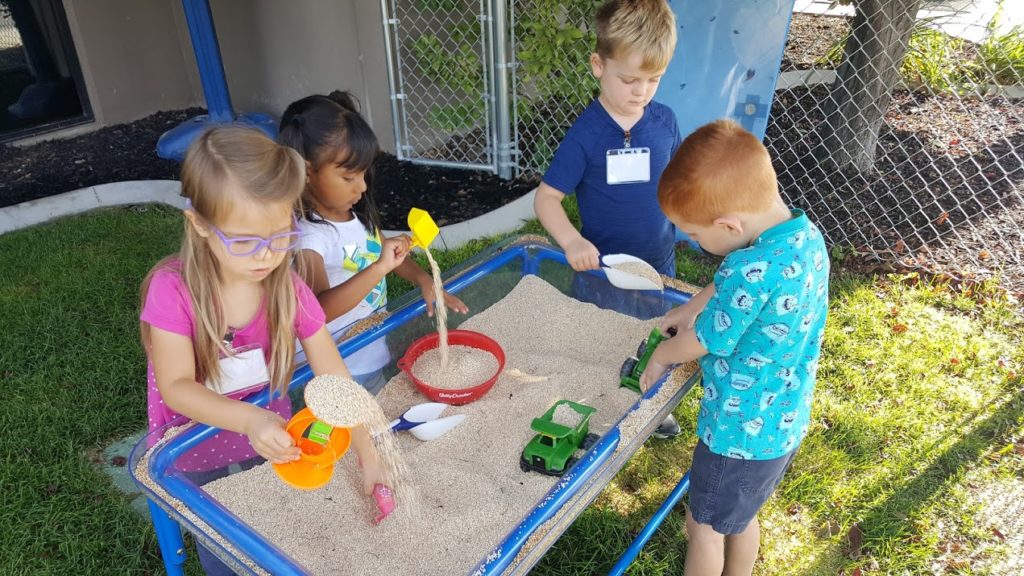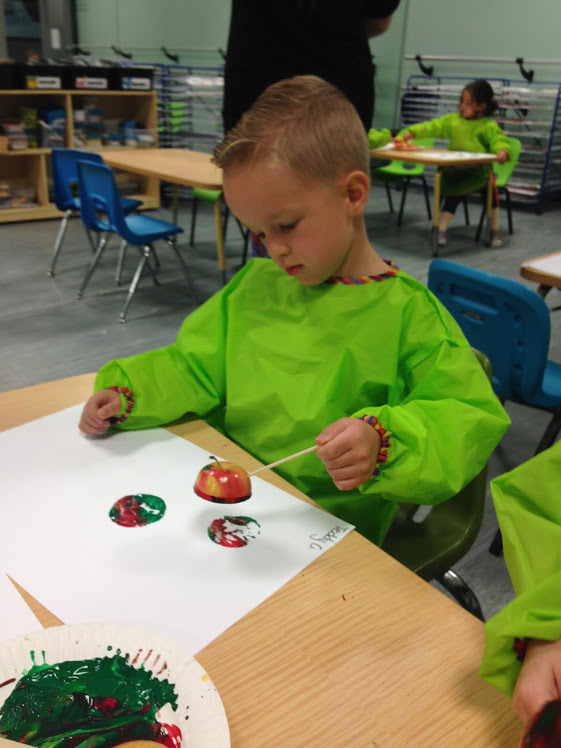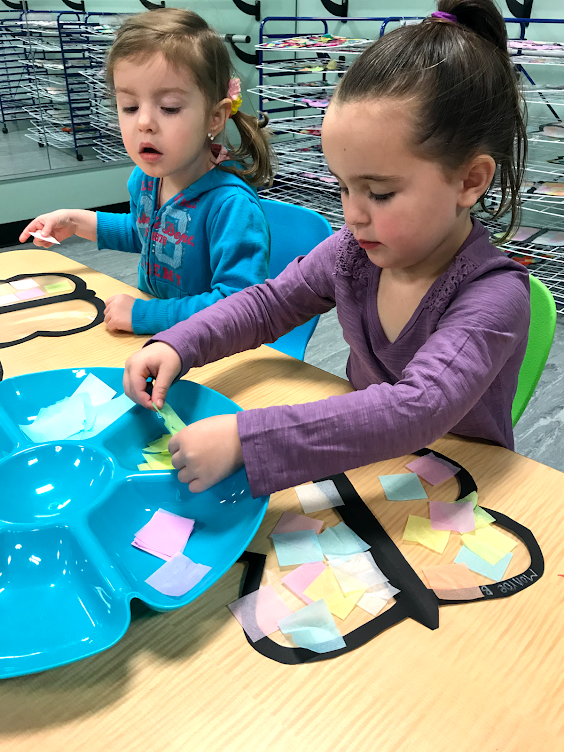A few years ago, one of our preschool families had a house fire. Their preschool-aged child said, “I know just what to do,” and coached her parents through the process of getting low to crawl under the smoke and out of the house before calling 911.
She even explained to her parents that the fire department would soon be there to help save their house, and they didn’t need to be afraid because the firemen were “very nice, even if they looked scary in their masks.”
How did she know how to not only stay calm, but the right actions to take? Because she had recently gone through our “S Is for Safety” week at UDA Creative Arts Preschool!
Talking about safety, practicing safety, and even playing pretend with safety themes helps young children be prepared for emergency situations. And when done right, it also helps children approach potentially-scary topics in a non-threatening way.
It’s never too early to incorporate safety themes in your family. We want to share with you some of what we taught during “S Is for Safety” week, and how you can bring the messages home.
Some Things to Keep in Mind When Teaching Safety to Preschoolers
The topic of safety is not a one-and-done topic. (Really, nothing is a one-and-done topic!)
To teach safety to preschoolers, you should have ongoing conversations, practices, and learning.
Remember these important items:
- Young children don’t know what you instinctively know by now. You know you need to point scissors down when you walk, and you know you should walk slowly when carrying a hot drink. But your child doesn’t know this. Remember that you need to go back to basics.
- Preschoolers don’t think about consequences of their behavior. They may climb up a wall without realizing they won’t be able to get down. This isn’t wrong; they just live in the here-and-now. As you remember that, you can have patience for their impulsivity as you teach.
- Preschool children don’t fully understand that their behavior affects others. They may not remember that they need to make sure nobody is at the bottom of the slide before they head down, because they’re thinking only about their own experience. This is normal.
- Keep your rules and explanations short and clear. Your child won’t absorb a lecture. “We wear helmets when we ride bikes,” is short and to the point.
Safety Rules to Teach Your Preschooler
First, it’s important for your preschooler to understand what is and what is not an emergency. For example, they may feel frantic if they aren’t allowed to stay up late, but this isn’t a time for them to call 911.
Define emergencies: fire, car accidents, someone is choking, someone is having trouble breathing, someone is unconscious, or a crime is happening.
Be sensitive to your child’s imagination and fears, and don’t tell your child more than they need to know.
How to Call 911
Your child needs to understand three things about 911:
- It is for emergencies only
- How to actually call
- How to speak to the dispatcher
Let your child practice dialing 911 on a pretend phone, or a larger-than-life phone pad like we show in the image above.
Teach your child how to speak to the dispatcher. They will need to be able to tell the dispatcher:
- Their address, or describe where they are
- What has happened
- Their name
Practice memorizing their address by putting it to a nursery rhyme song: “Twinkle, Twinkle Little Start” or “Mary Had a Little Lamb” often work.
Firefighters Aren’t Scary
A challenge for firefighters is that children often view them as scary strangers, leading them to hide in a dangerous situation.
Exposing your child to firefighters in a friendly way can help your child be willing to accept help if they are ever in a dangerous situation.
We invited the Draper City Fire Department to preschool to help the children associate positivity with firefighters. As a parent, you can visit the local fire station and look at pictures of firefighters in their full gear.
Help your child understand that even though the gear may make a firefighter look or sound scary, the person under the gear is there to help them.
Stop, Drop, and Roll
Teach your child to stop, drop, and roll if they ever have fire on their clothing or body. An easy way to do this is to actually do the actions.
By practicing, your child is making this idea more permanent in their minds. If they ever encounter this emergency, they will have an easier time remembering what to do.
In addition, teach your child to “stay low and go” in a fire. Remember our preschooler who taught her parents to get below the smoke? Practice this together, so it becomes an automatic reaction if needed. Remind your child to cover their face.
Street Safety
Children are small and can be missed by motorists. Teach your child about street signs, like stop signs, stop lights, and crosswalks, so they understand what they should do when they encounter one.
Teach your child to stop, look, and listen any time they approach a street or driveway. And teach them to stop when their name is called.
Teach your child to stay near an adult when they are in a street or parking lot. In fact, a good rule is to hold hands when getting in and out of the car, and then again while walking through the street or parking lot.
When riding bikes, children should wear helmets and avoid riding in driveways or the street.
Safety at Home
First, do what you can to create an environment that keeps dangerous objects out of children’s reach.
Then, empower your child to know what to do when they encounter a dangerous object.
- Teach them not to touch sharp things, but to ask an adult for help if one is in the way.
- Point out electrical outlets, and teach your child not to put anything in them.
- Walk around the house to show your child “hot zones”: the stove, curling irons, space heaters, toasters, the fireplace, etc. Tell your child not to touch these items.
- Keep medicines out of reach, but be sure to tell your child not to eat or drink any medicine, even if it looks like candy. Additionally, teach your child not to eat candy without first talking to a grownup. Explain that many things look like candy that actually aren’t.
Water Safety
Never leave your child alone near any body of water (including the bath tub, wading pool, or activity bucket in the backyard).
Further empower your child by teaching them water safety rules:
- Never swim alone. It should always be a group activity.
- Never play near water alone. They should find an adult if they want to play in a backyard with an unfenced pool.
- If your child encounters a fenced pool, they should never climb the fence.
- Wear appropriate life vests when participating in water activities.
Strangers
Teach your child they shouldn’t go anywhere with anyone unless their parents have personally told them it’s okay. If someone they don’t know approaches them, tell them to find a trusted adult.
Have your child find you before answering the door.
How to Teach Safety to Preschoolers Without a Lecture
Conversations about safety with your preschooler are great, and should be happening regularly. When you do, make sure you’re leaving time and space for your child to ask questions and share their feelings.
But help the subject of safety become more real to your child with these tips:
- Encourage your child to dress up like community helpers who keep us safe, like firefighters, nurses, and doctors.
- Give your child toy tools and props that safety workers use.
- Let your child act out a rescue situation, like calling 911 when a stuffed animal is choking, or putting out pretend fires in the living room.
- Take a walk or drive around the neighborhood, and point out all the signs and what they tell us to do. Create a sidewalk chalk path, and include those signs. Have your child ride their bike or take a walk, and follow the directions of the signs.
- Read books about emergency helpers.
At UDA Creative Arts Preschool in Draper, Utah, we work to prepare children for all aspects of life. To learn more about how we teach, contact us online or give us a call at (801) 523-5930.




































